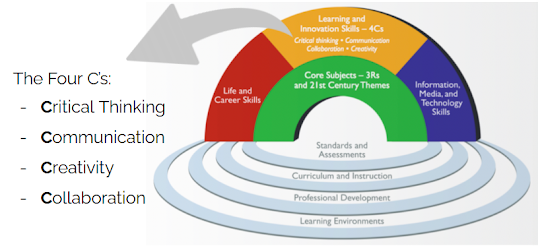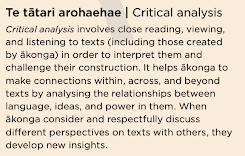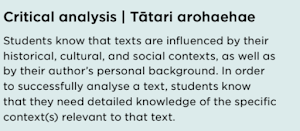Day 7...
💭 Thinking About Thinking
As teachers, we’re always thinking ahead, not just to next week’s lessons, but to the long-term skills and dispositions our students will need to thrive. Today’s session gave us the opportunity to take a deep dive into the nature of thinking itself, and the role it plays across all areas of the curriculum.
Dorothy opened with an exploration of the 4 Cs - critical thinking, creativity, collaboration, and communication. Reminding us that in order to be effective 21st-century learners, our students must be empowered with these future-focused skills.
“To be effective in the 21st century, citizens and workers must be able to exhibit a range of functional and critical thinking skills related to information, media and technology.”
— Partnership for 21st Century Learning

This ties directly to our role in fostering cybersmart learners. Students who are not just skilled at using technology, but who are thoughtful, connected, and confident digital citizens. The Manaiakalani Cybersmart Framework supports this by providing clear guidance on the knowledge, capabilities, ad literacies learners need to succeed in both school and life.
One key takeaway from today's learning was the idea that 21st century skills don't replace academic content, they enhance it. Deep thinking, problem solving, effective communication, and collaboration are most powerful when built on a solid foundation of subject knowledge.
Our challenge as educators is to intentionally weave these skills into the fabric of our everyday teaching, no matter the subject area. By thinking about thinking and teaching our students how to do the same how to do the same, we're preparing them to navigate an ever-changing world with Curiosity, capability, and confidence.

🔹Literal Comprehension – “Right There” Thinking
At the literal level, comprehension focuses on identifying the “who,” “what,” and “where” of a text. These are surface-level questions that require readers to locate information that is directly stated — often referred to as “seek and find” answers. As long as the reader understands what is explicitly written, they can determine meaning from a single word, sentence, or line, or by putting together clearly stated details from different parts of the text.
🔹 Interpretive - “Between the Lines”
At the interpretive or inferential level, the reader must go beyond the surface of the text to uncover implied meanings. These meanings aren’t directly stated and require the reader to make connections between clues in the text and their own knowledge, experience, or understanding of context.
This is an active negotiation between the reader and the text, they must ‘work out’ what the author is suggesting or hinting at. This level of comprehension is more cognitively demanding, as it relies on the reader’s ability to:
A key challenge is that if the reader doesn’t have the necessary background knowledge, they may struggle to connect the dots and uncover the intended message.
🔹 Evaluative Comprehension – “Beyond the Text”
At the evaluative level, readers are encouraged to think critically and reflectively about the text. This involves making value judgements about the author’s ideas, purpose, or message, often relating to reliability, truthfulness, bias, or ethical impact.
Evaluative comprehension asks the reader to:
-
Weigh the author’s ideas against real-world knowledge or personal beliefs
-
Consider possible consequences, motives, or intentions
-
Judge how effectively the text communicates its message or achieves its purpose
This level moves readers from simply understanding what a text says, to forming opinions and taking a position on its meaning and implications.

I enjoyed today’s session on Interpreting Figurative Language. One effective way to develop readers’ interpretive thinking skills is by supporting them to analyse and interpret language features. Even at Level 1 of the New Zealand Curriculum, students are expected to recognise how language features are used for effect, which helps them move beyond literal comprehension and begin to understand the deeper meaning or purpose behind an author’s choices.
Here is an example using a graphic organiser about the text The Wild Robot, which we are exploring this term through a film study.


I also enjoyed the workshop on critical thinking and exploring provocation as a tool to engage students. It highlighted the importance of creating opportunities for learners to question, challenge, and think deeply about texts and the world around them. As Luke (2012) explains:
“A critically literate person is able to examine the power relationships inherent in language use, to recognise that language is not neutral, and to confront their own values in the production and reception of language.”
This resonated with me as a reminder of how powerful literacy can be when students are encouraged to think critically, reflect on different perspectives, and explore how language shapes understanding.
In the classroom, one provocation I plan to use while exploring The Wild Robot is:
Big Idea: We all play a role in building a strong, respectful community by taking responsibility for ourselves and supporting others
Provocation: Can a Robot Be Part of a Community?
Analysts: Introduce and discuss key terms and ideas they will encounter:
- Community – What makes a community work? Who belongs?
- Responsibility – What does it mean to take care of others or your environment?
- Empathy – How do we understand and care for those who are different?
- Perspective – How does the point of view (a robot's) shape the story?
Resist: Retell a key scene from the perspective of another character.
Purpose:
- Builds empathy and challenges a single narrative.
- Encourages students to explore how different voices can change the story's message.
All in all, today was truly a day dedicated to thinking about language, learning, and the deeper skills we foster as educators. It’s left me with plenty to reflect on and some powerful ideas to take back to the classroom. 🤔











.jpg)
.png)









